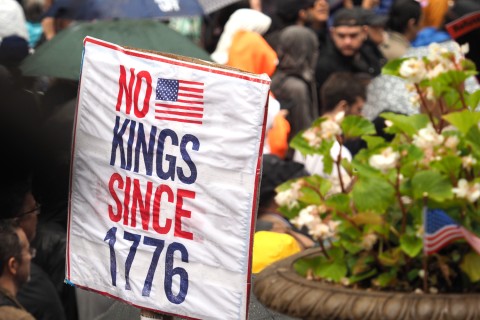What future is there for women religious in the West?
Most Americans are more likely to know Catholic sisters as fictional characters in books, movies, or television shows than they are to meet or know one in real life. The fictional Protestant sisters of the (also fictional) order of St. Raymond Nonnatus on the BBC series Call the Midwife are more numerous than the real-life ones I’ve met in the course of my life. The show, set in postwar London in the 1950s and early 1960s, portrays sisters who may be just another quaint period detail, like the Bakelite telephones and the unexploded ordinance leftover from the Blitz.
Is there a future for religious women in North America and Western Europe? Even heavily Catholic regions like Ireland and Quebec have populations of Catholic sisters who are overwhelmingly elderly, with few younger women to replace them or even to care for them within their communities. In the course of researching 18th-century Ursulines, I visited their monastery in Quebec City, which was founded in 1639 and hosts the oldest school for girls in North America. It felt more like a retirement home. I met no religious women under 70, and almost none of them were performing any of the work central to their apostolate. All of the teachers at the school are now laypeople. Sometimes it feels like the sisterhood is on its way to extinction.
The Roman Catholic church in the West no longer represents for women the alternative to secular society that it once did. For women in Catholic countries, religious life used to offer a different path from marriage and motherhood, one that included the opportunity to develop leadership skills, manage and invest money, and run important social institutions that were spiritually powerful and widely respected.
As European and North American democracies matured they began to recognize women as full citizens of their nations, extending to women voting rights and economic independence. The church persisted with business as usual when it comes to the roles it assigns to women—with one important exception. At the Second Vatican Council, Pope John XXIII hosted conversations about the role of an outward-facing church in the modern world. At the same time, perhaps not coincidentally, the church experienced a burst of enthusiasm for religious life. The number of religious women in the U.S. reached its all-time high in 1965, and the women of that generation did not enter religious life to leave the world behind. Indeed, many women in this generation became key leaders in the civil rights movement, the antiwar movement, and protesting nuclear weapons.
But since Vatican II, conversations in the Catholic Church about the changing role of women in the world have been met with silence or outright hostility. Energetic and ambitious women of faith have chosen overwhelmingly to pursue a secular life, because convents are no longer the only place where women can offer service and leadership outside their homes.
As I see it, there are three possibilities for the future of religious women:
- My research on the 18th-century Ursulines shows that war inspired more young women to enter the religious life. A global economic or environmental catastrophe might encourage young women once again to seek shelter and service in a monastery.
- Failing that eventuality, the church might reevaluate the leadership and spiritual roles it assigns to women, as it began to do in Vatican II.
- Alternatively, the church might withdraw from the West and encourage the sisterhood in parts of the world that are as war-torn or uncertain as the 18th-century northeastern borderlands.
Perhaps Francis or the next pope will seize the opportunity to inspire young people again to be the outward-facing church of the future, in both the West and less prosperous parts of the world. Women in living memory have filled Western monasteries with their energy and devotion, so it may not be too late. Now may be the time to convene another Vatican council to consider the role of women in the church, before women religious are relegated to the histories and historical fiction.
Our weekly feature Then and Now harnesses the expertise of American religious historians who care about the cities of God and the cities of humans. It's published in partnership with the Kripke Center of Creighton University and edited by Edward Carson and Beth Shalom Hessel.




